Abstract
According to optimal foraging theory, animals should prefer food items with the highest ratios of energy intake to handling time. When single items have negligible handling times, one large item should be preferred to a collection of small ones of equivalent total weight. However, when pigeons were offered such a choice on equal concurrent variable-interval schedules in a shuttlebox, they preferred the side offering many small items per reinforcement to that offering one or a few relatively large items. This preference was still evident on concurrent fixed-cumulative-duration schedules in which choosing the alternative with longer handling time substantially lowered the rate of food intake.
Keywords: concurrent schedules, reinforcement magnitude, reinforcement delay, handling time, foraging, shuttlebox, pigeons
Full text
PDF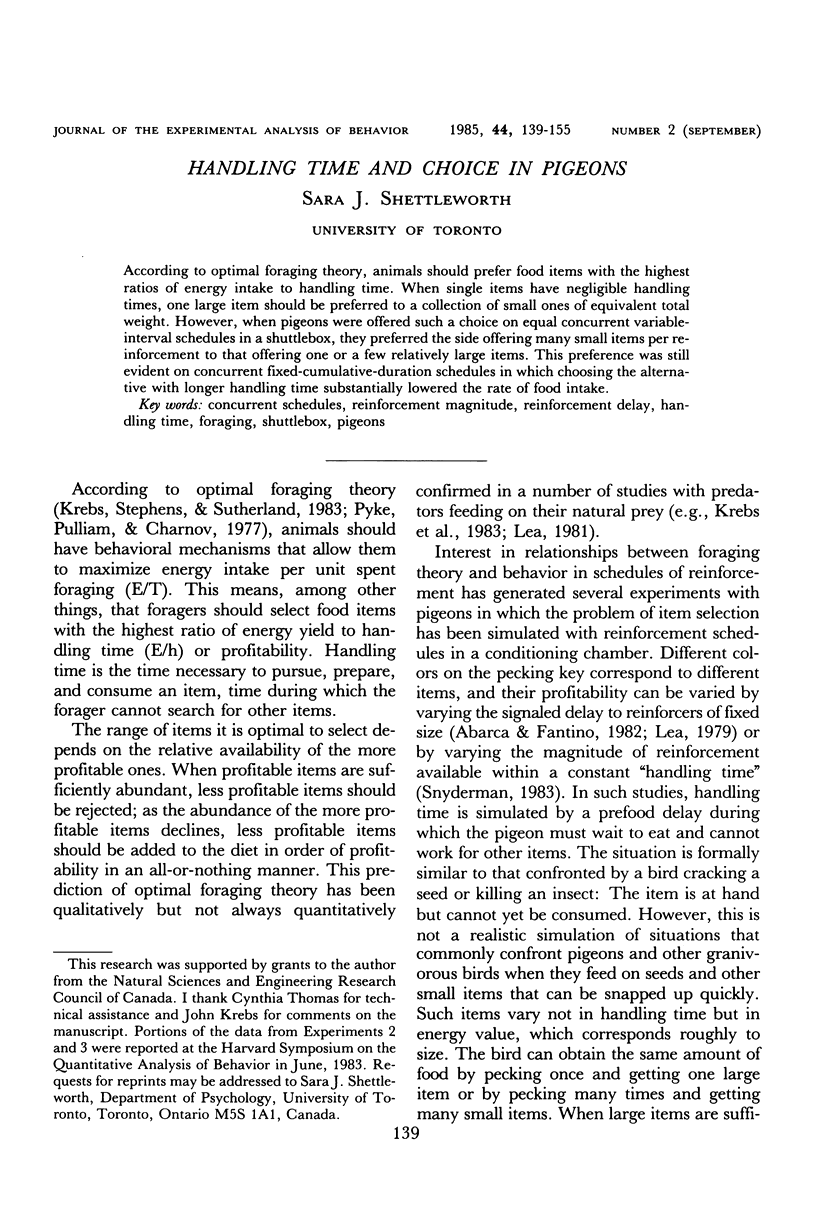
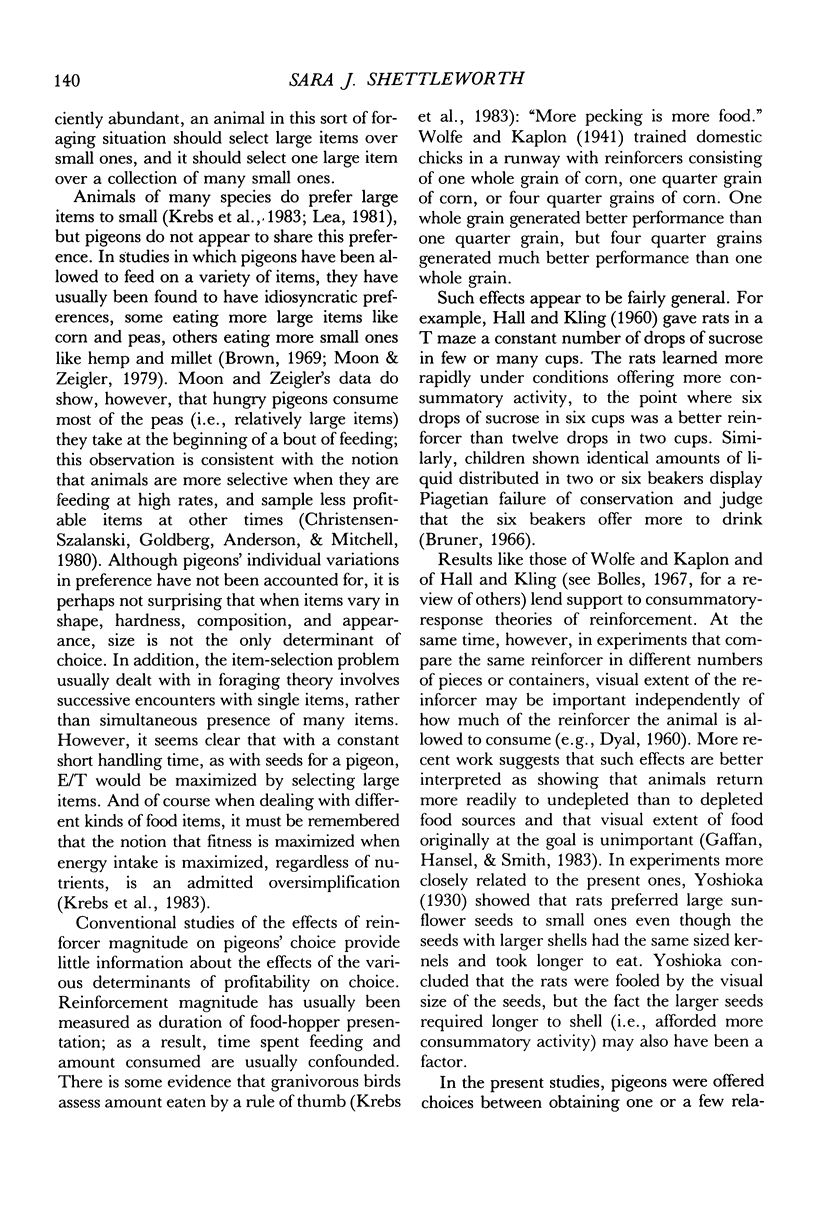
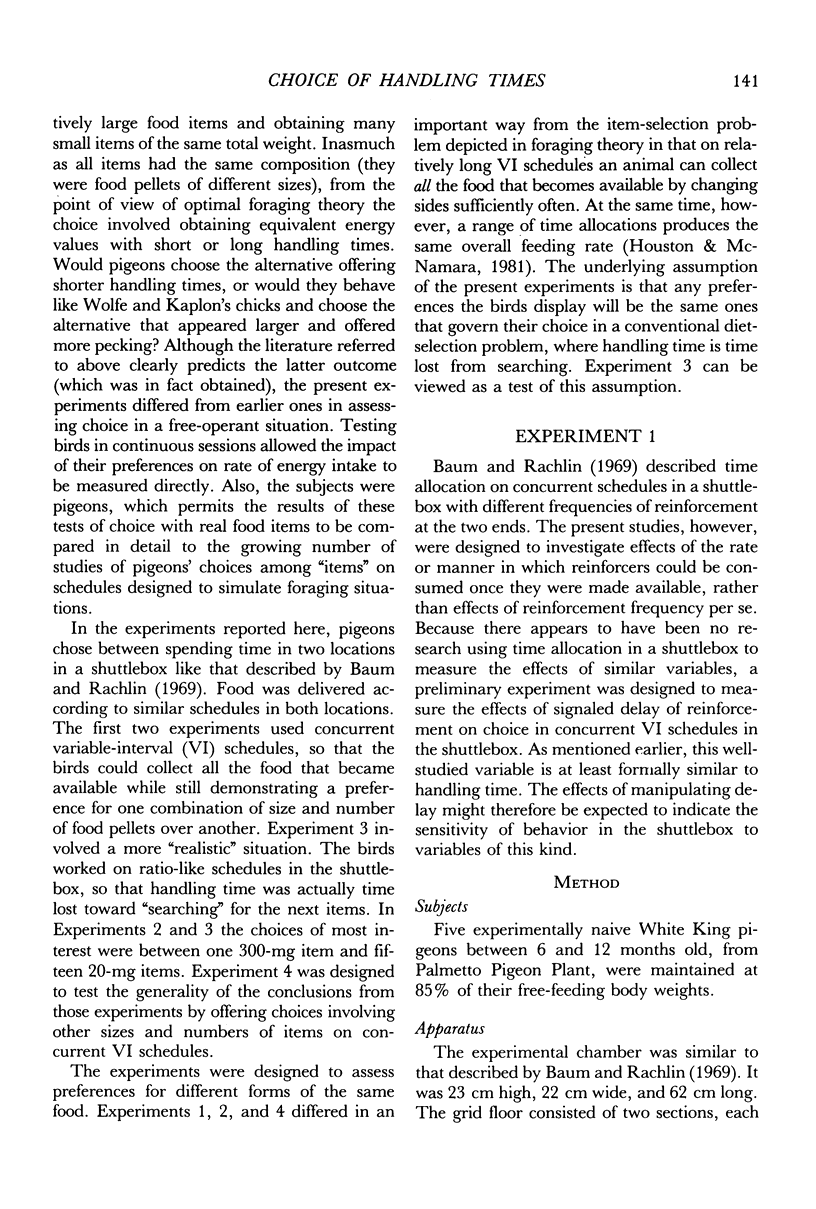
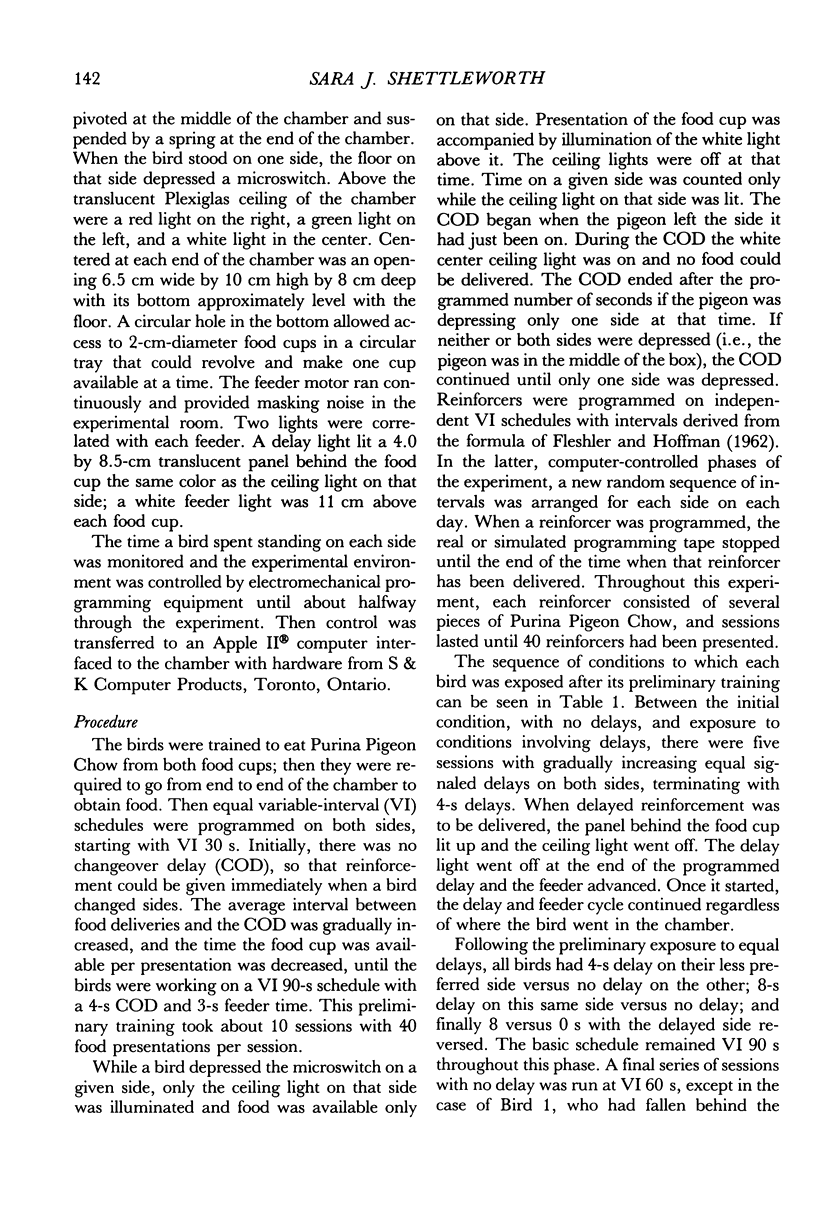
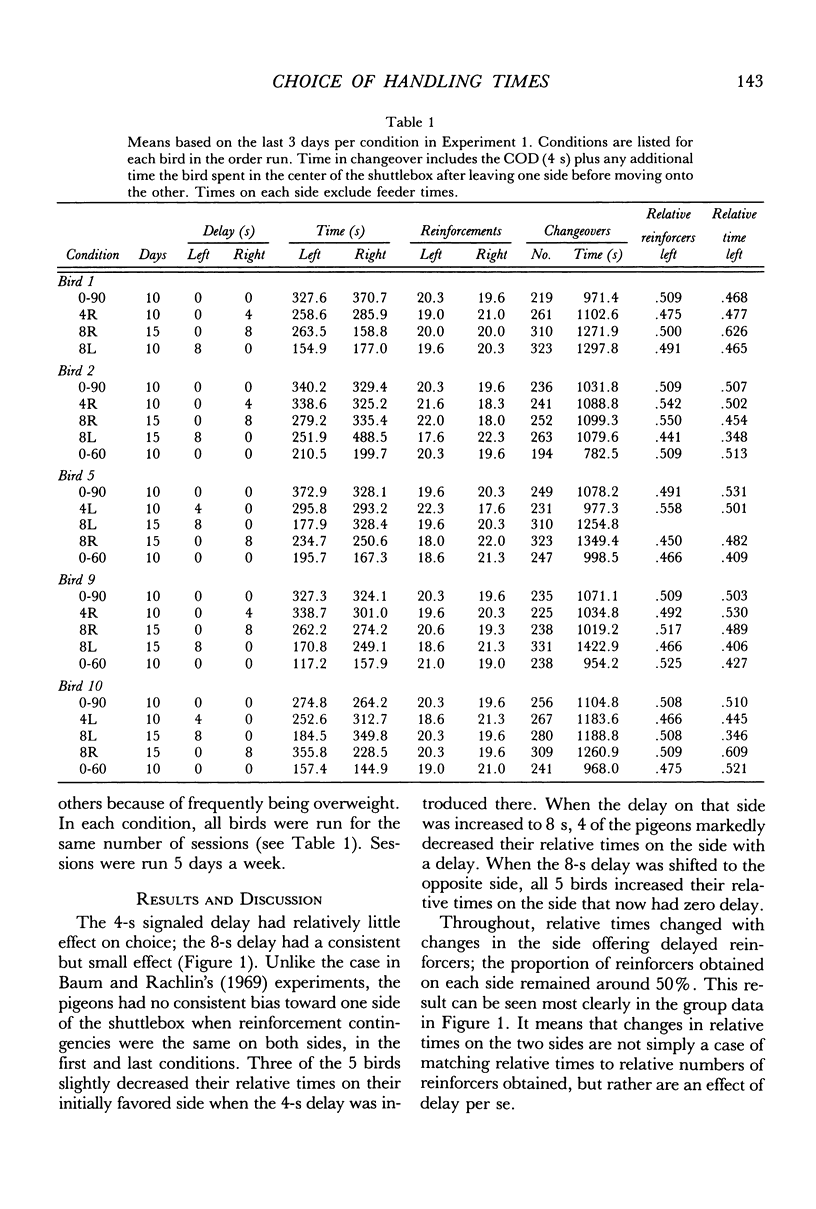
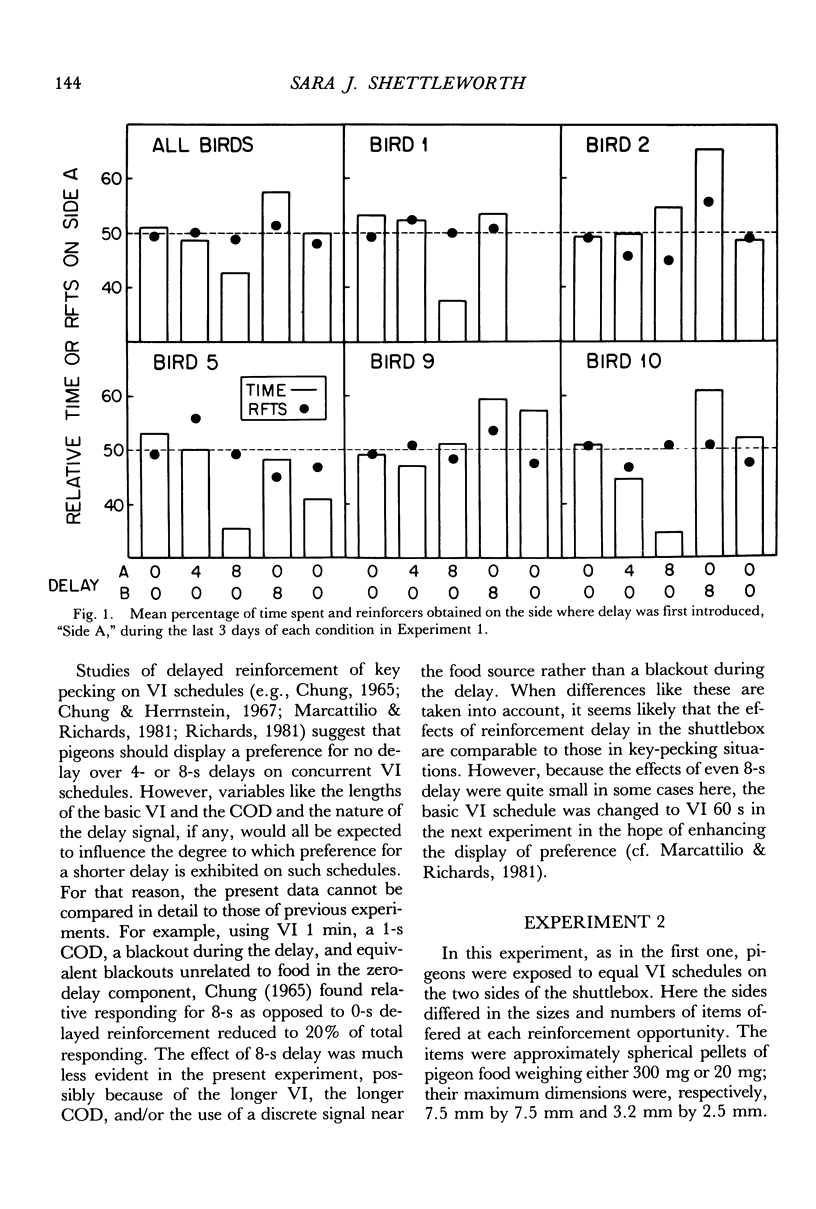
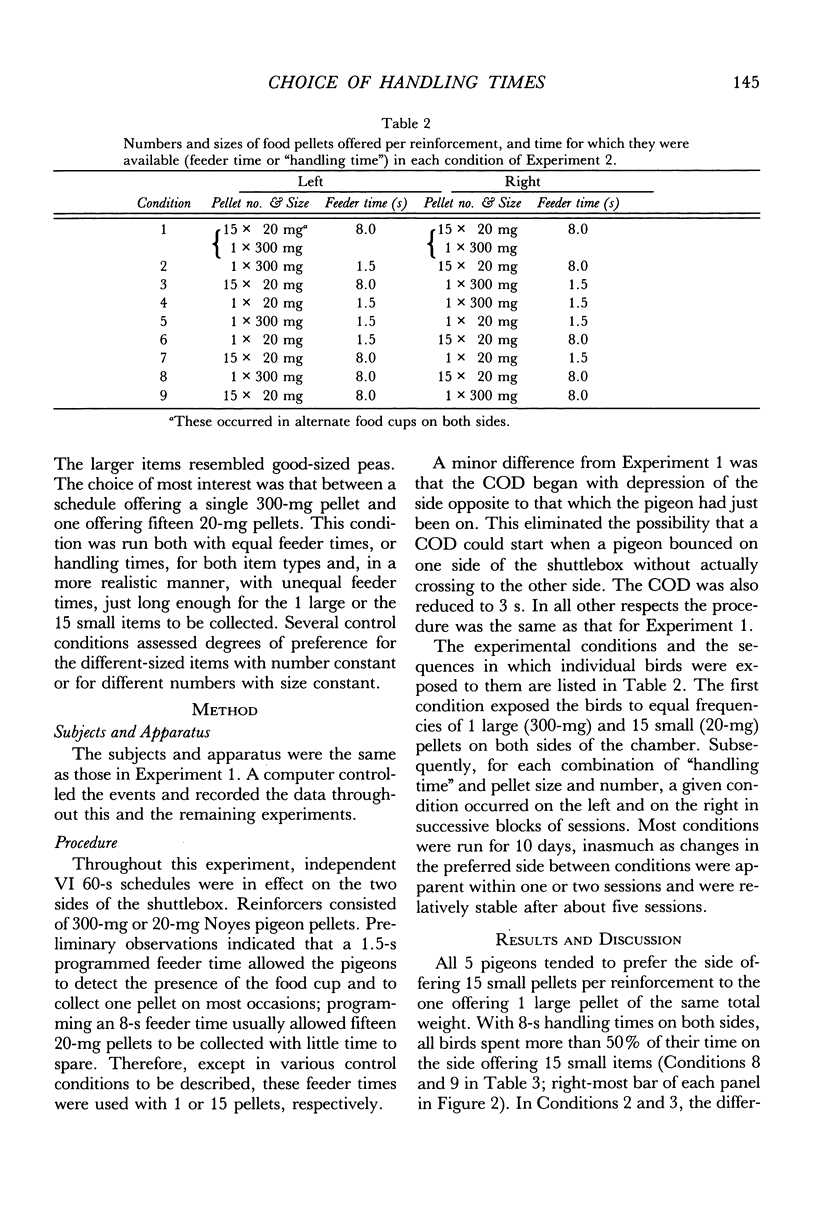
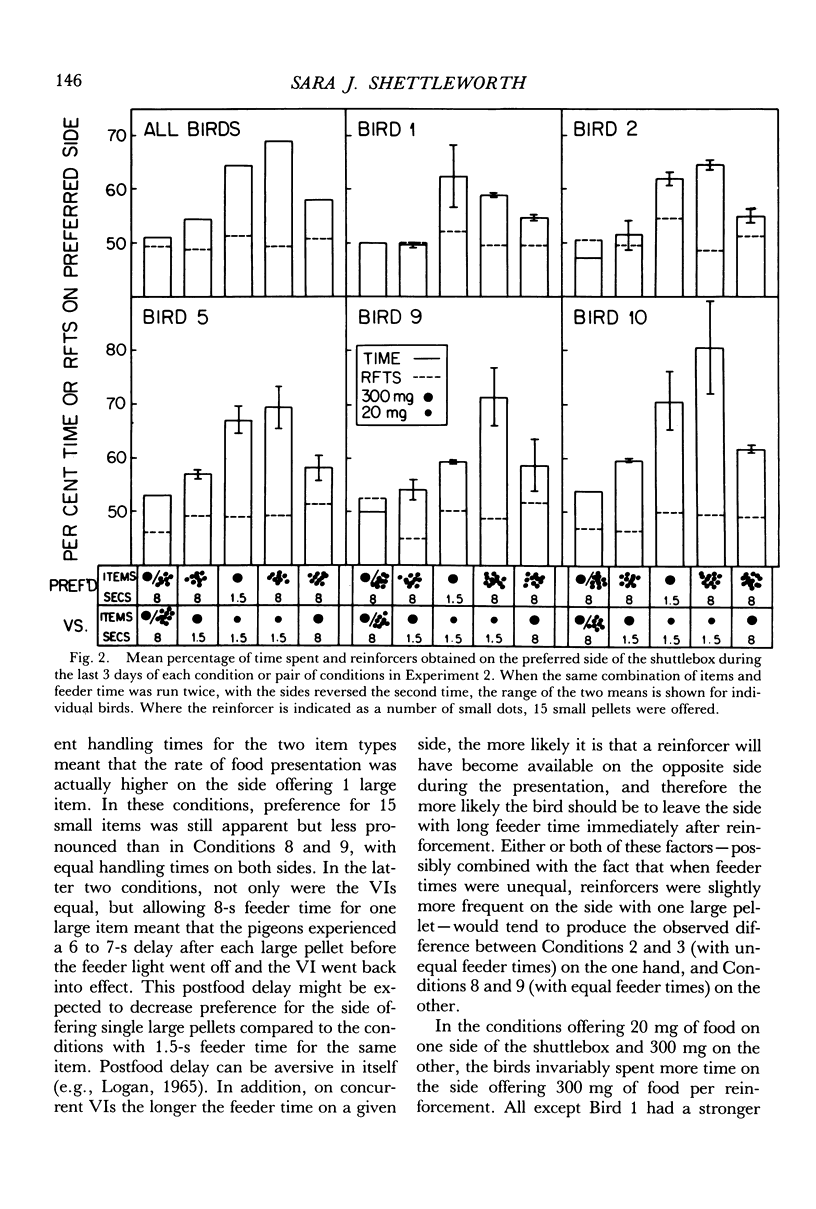



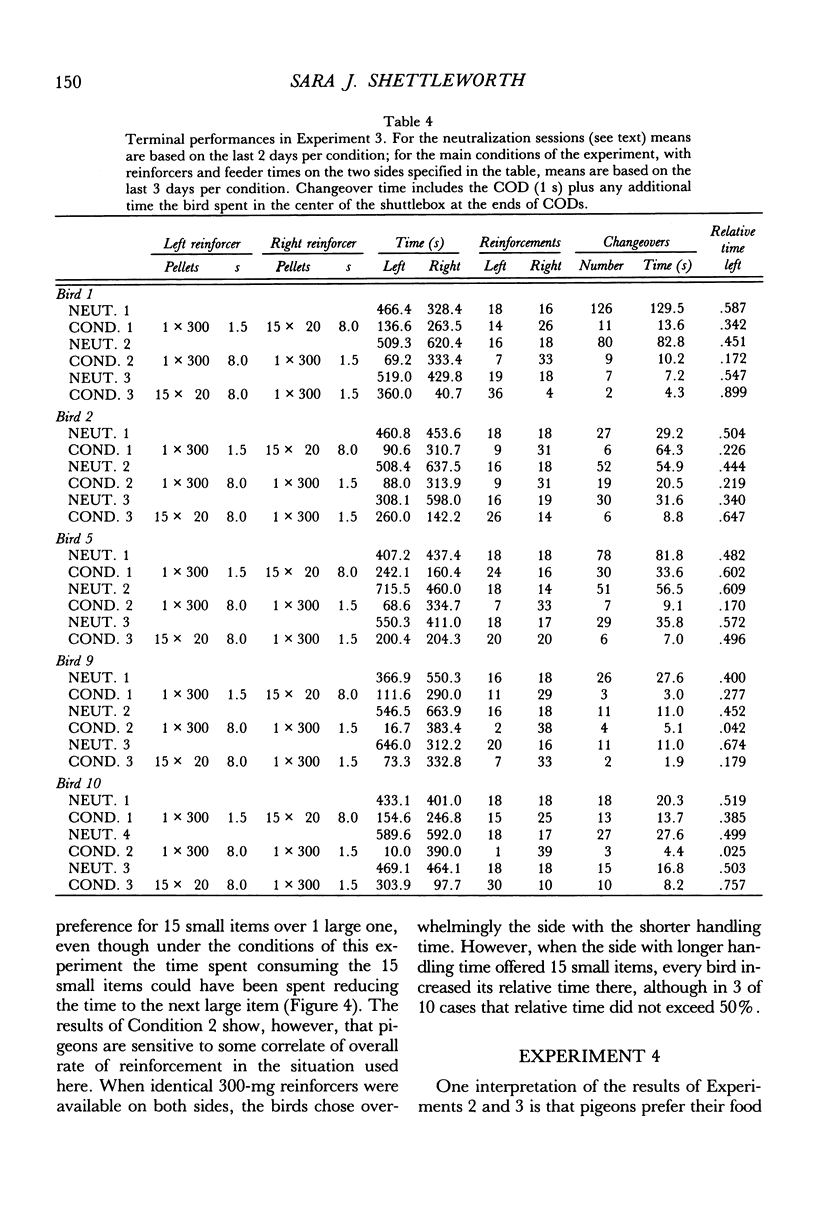
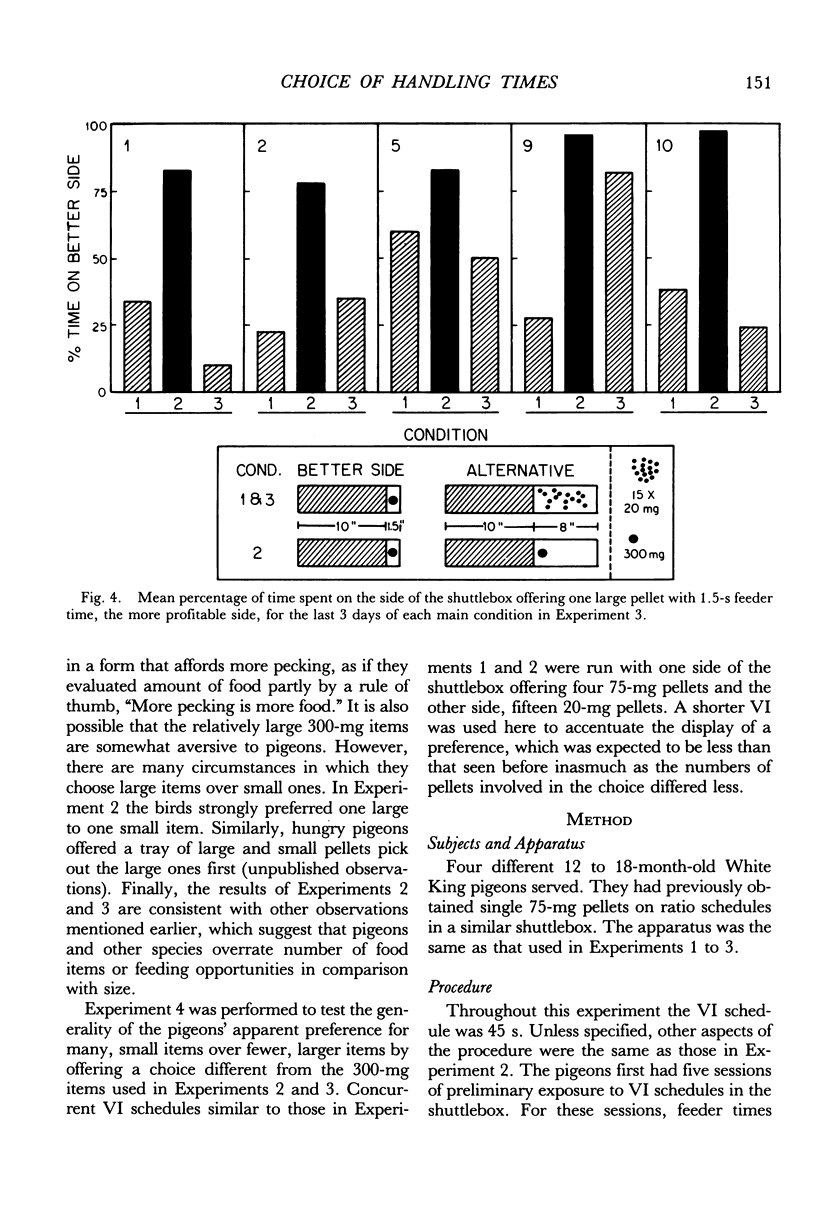
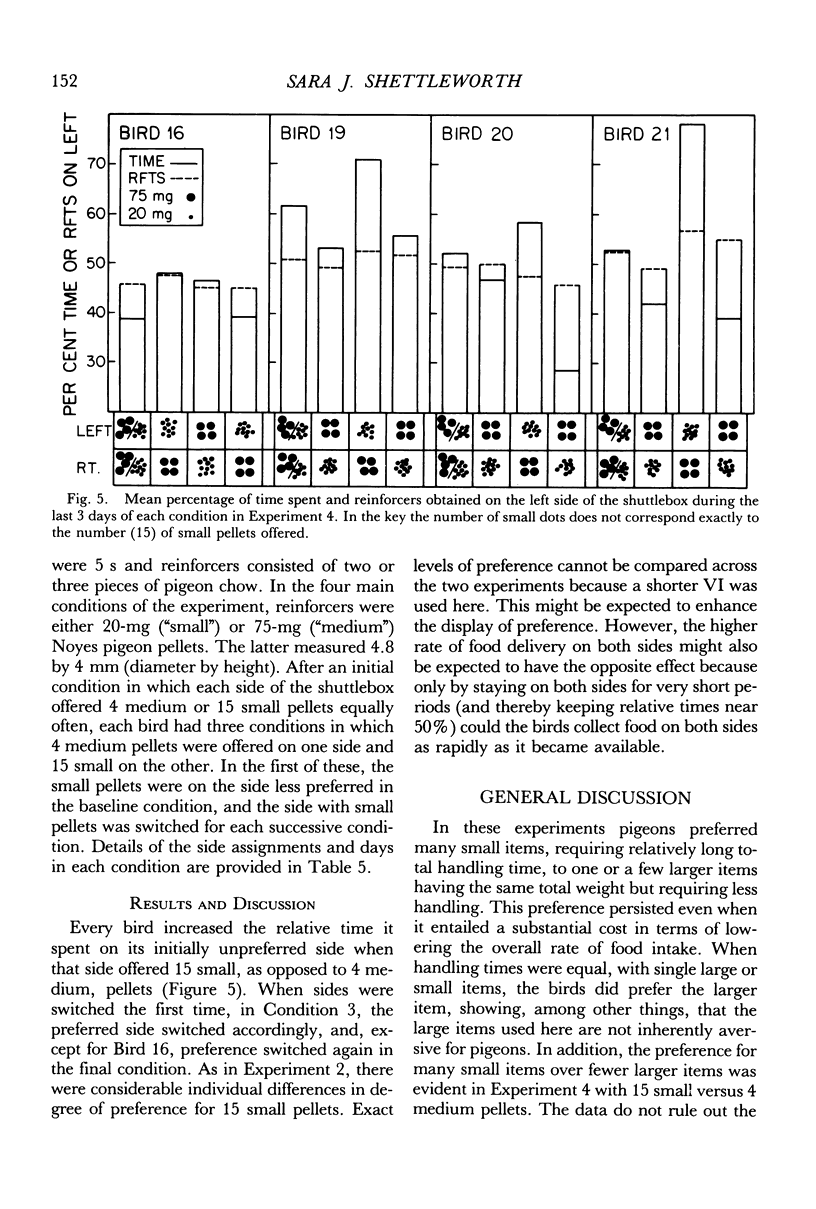
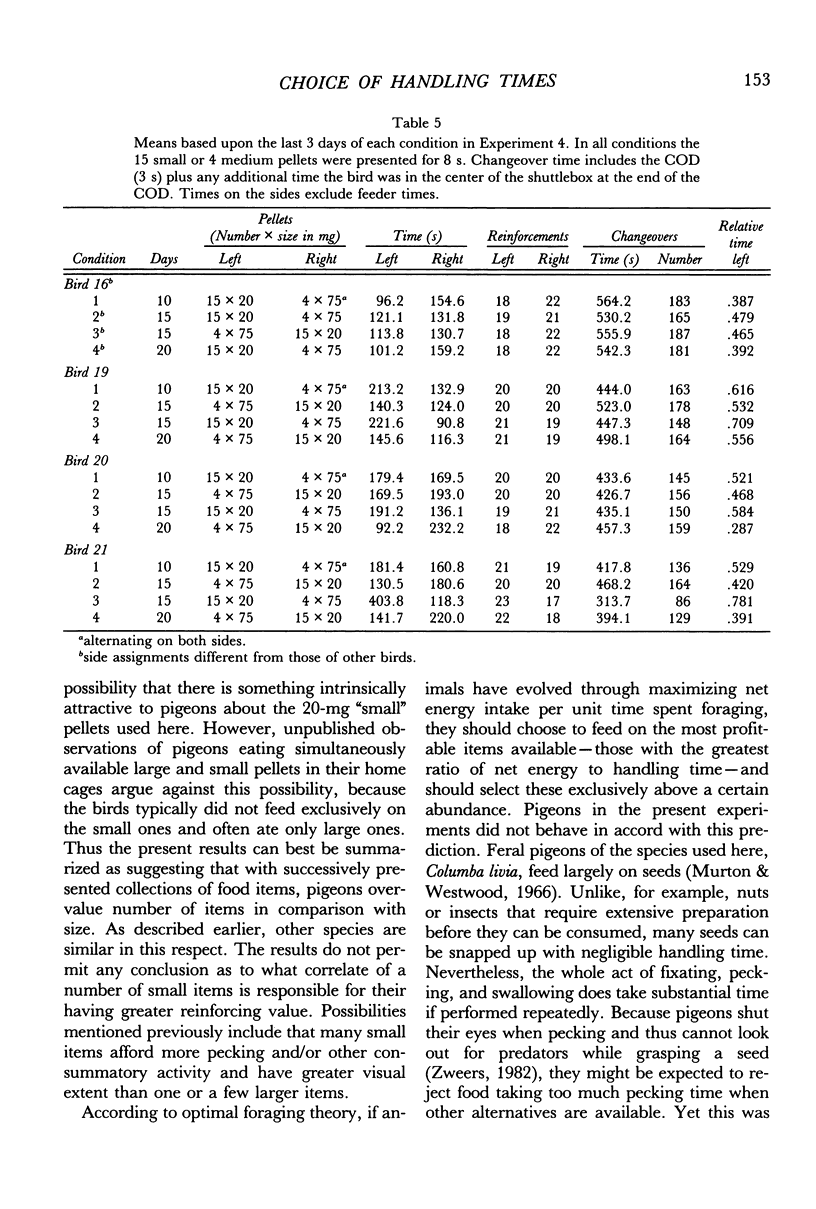
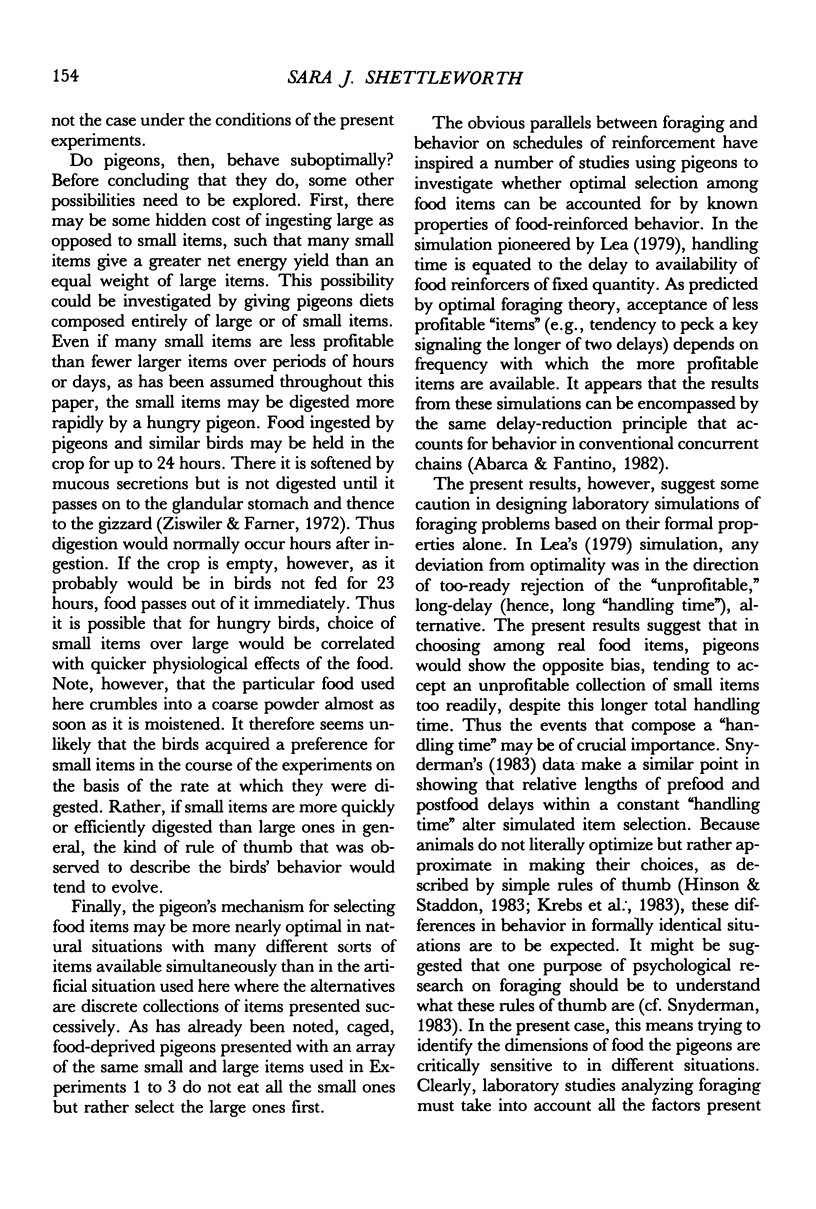
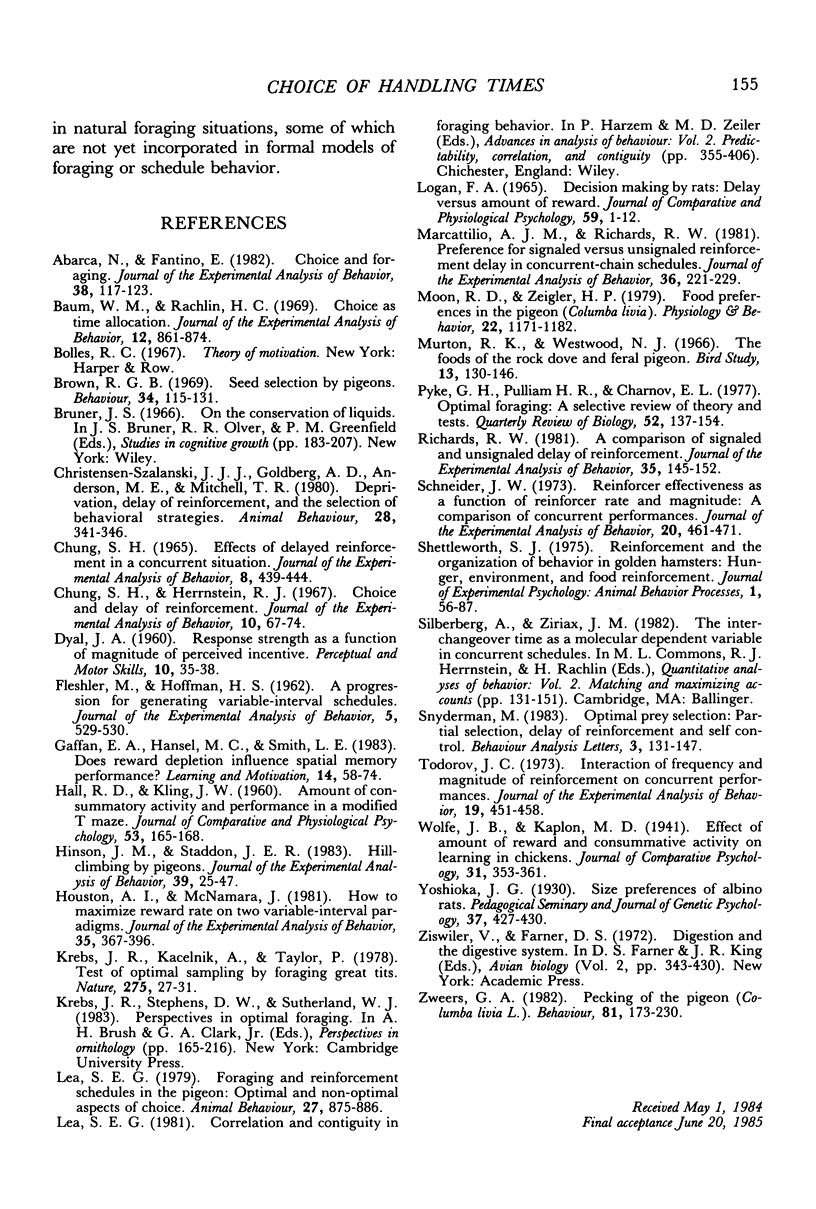
Selected References
These references are in PubMed. This may not be the complete list of references from this article.
- Abarca N., Fantino E. Choice and foraging. J Exp Anal Behav. 1982 Sep;38(2):117–123. doi: 10.1901/jeab.1982.38-117. [DOI] [PMC free article] [PubMed] [Google Scholar]
- Baum W. M., Rachlin H. C. Choice as time allocation. J Exp Anal Behav. 1969 Nov;12(6):861–874. doi: 10.1901/jeab.1969.12-861. [DOI] [PMC free article] [PubMed] [Google Scholar]
- Chung S. H. Effects of delayed reinforcement in a concurrent situation. J Exp Anal Behav. 1965 Nov;8(6):439–444. doi: 10.1901/jeab.1965.8-439. [DOI] [PMC free article] [PubMed] [Google Scholar]
- Chung S. H., Herrnstein R. J. Choice and delay of reinforcement. J Exp Anal Behav. 1967 Jan;10(1):67–74. doi: 10.1901/jeab.1967.10-67. [DOI] [PMC free article] [PubMed] [Google Scholar]
- FLESHLER M., HOFFMAN H. S. A progression for generating variable-interval schedules. J Exp Anal Behav. 1962 Oct;5:529–530. doi: 10.1901/jeab.1962.5-529. [DOI] [PMC free article] [PubMed] [Google Scholar]
- HALL R. D., KLING J. W. Amount of consummatory activity and performance in a modified T maze. J Comp Physiol Psychol. 1960 Apr;53:165–168. doi: 10.1037/h0044991. [DOI] [PubMed] [Google Scholar]
- Hinson J. M., Staddon J. E. Hill-climbing by pigeons. J Exp Anal Behav. 1983 Jan;39(1):25–47. doi: 10.1901/jeab.1983.39-25. [DOI] [PMC free article] [PubMed] [Google Scholar]
- Houston A. I., McNamara J. How to maximize reward rate on two variable-interval paradigms. J Exp Anal Behav. 1981 May;35(3):367–396. doi: 10.1901/jeab.1981.35-367. [DOI] [PMC free article] [PubMed] [Google Scholar]
- LOGAN F. A. DECISION MAKING BY RATS: DELAY VERSUS AMOUNT OF REWARD. J Comp Physiol Psychol. 1965 Feb;59:1–12. doi: 10.1037/h0021633. [DOI] [PubMed] [Google Scholar]
- Marcattilio A. J., Richards R. W. Preference for signaled versus unsignaled reinforcement delay in concurrent-chain schedules. J Exp Anal Behav. 1981 Sep;36(2):221–229. doi: 10.1901/jeab.1981.36-221. [DOI] [PMC free article] [PubMed] [Google Scholar]
- Moon R. D., Zeigler H. P. Food preferences in the pigeon (Columba livia). Physiol Behav. 1979 Jun;22(6):1171–1182. doi: 10.1016/0031-9384(79)90273-7. [DOI] [PubMed] [Google Scholar]
- Richards R. W. A comparison of signaled and unsignaled delay of reinforcement. J Exp Anal Behav. 1981 Mar;35(2):145–152. doi: 10.1901/jeab.1981.35-145. [DOI] [PMC free article] [PubMed] [Google Scholar]
- Schneider J. W. Reinforcer effectiveness as a function of reinforcer rate and magnitude: a comparison of concurrent performances. J Exp Anal Behav. 1973 Nov;20(3):461–471. doi: 10.1901/jeab.1973.20-461. [DOI] [PMC free article] [PubMed] [Google Scholar]
- Todorov J. C. Interaction of frequency and magnitude of reinforcement on concurrent performances. J Exp Anal Behav. 1973 May;19(3):451–458. doi: 10.1901/jeab.1973.19-451. [DOI] [PMC free article] [PubMed] [Google Scholar]


